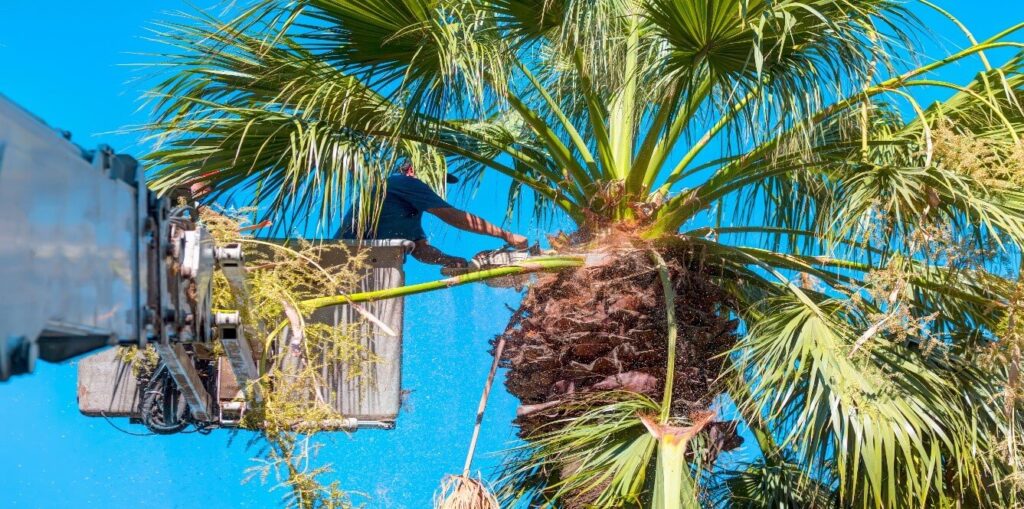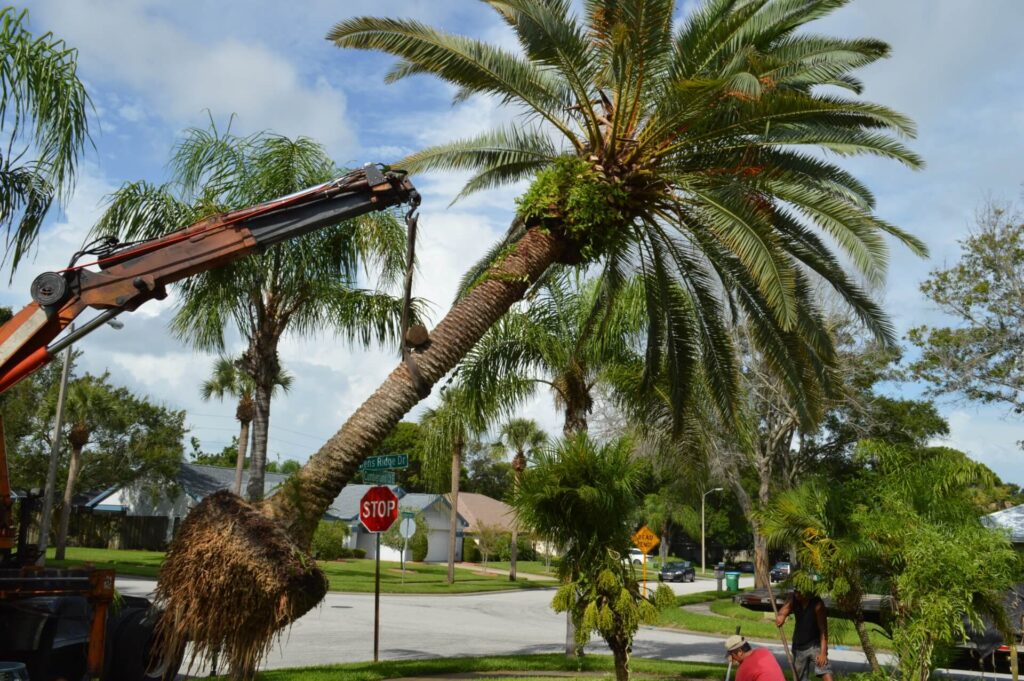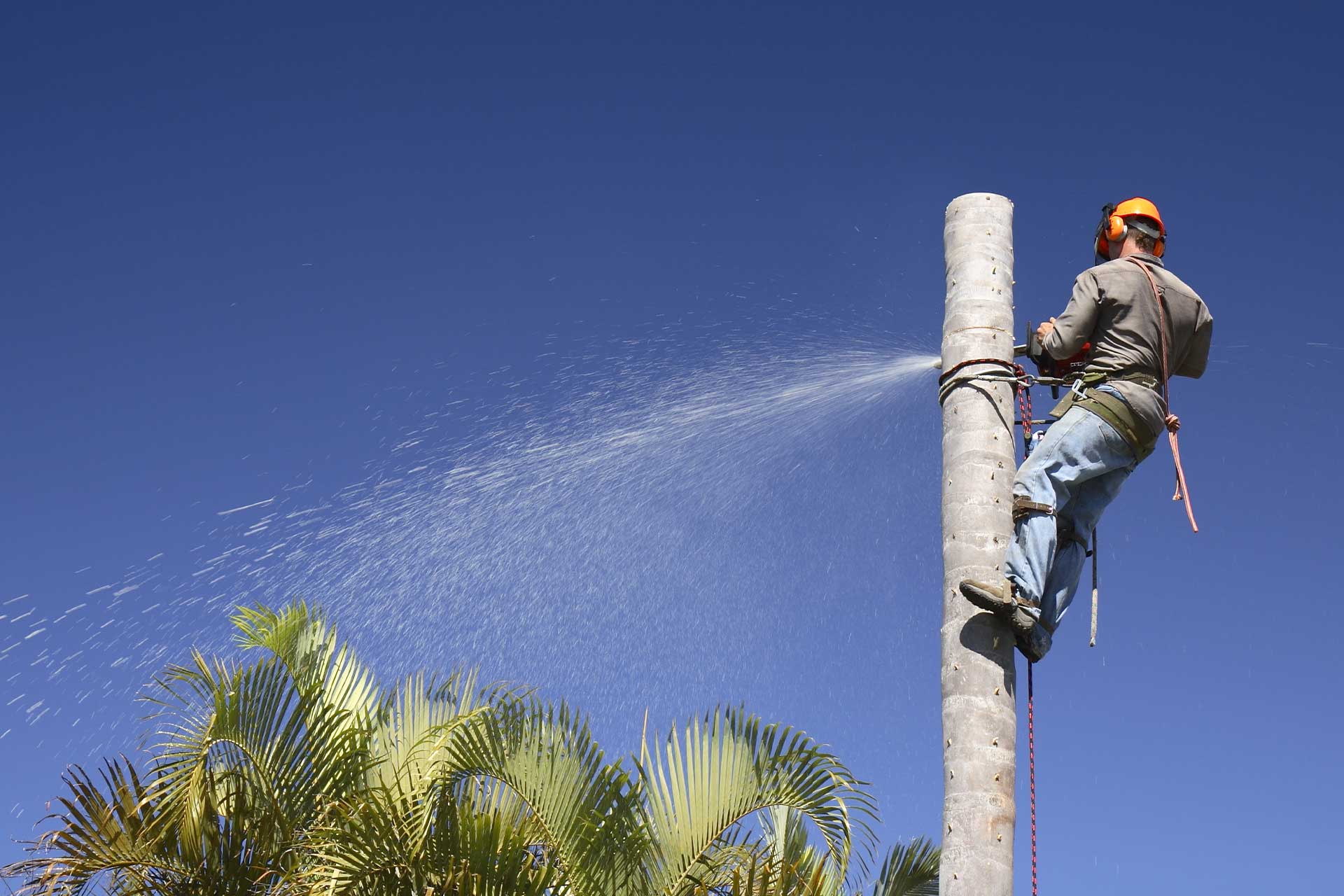Palm trees are a beautiful addition to any property. They add a touch of tropical paradise and can enhance the overall aesthetic appeal. However, there are times when palm tree removal becomes necessary. Whether it’s due to disease, storm damage, or aesthetic reasons, it’s crucial to understand the process and importance of professional palm tree removal. In this article, we will explore the need for palm tree removal, the process involved, safety measures, legal considerations, and the benefits of hiring professionals.
The Process of Palm Tree Removal
The palm tree removal process involves several stages, beginning with an initial assessment and ending with post-removal clean-up. Each step requires careful planning and execution to ensure a smooth and safe removal process.
Initial Assessment and Planning
Prior to any removal, it’s necessary to conduct an initial assessment of the palm tree. A certified arborist or tree removal specialist can evaluate the tree’s condition and determine the best approach for removal. Factors such as tree size, location, and potential hazards are taken into consideration during this assessment.
During the assessment, the arborist will closely examine the tree, checking for any signs of disease or decay. They will also assess the tree’s root system to determine if it poses a risk to underground utilities or structures. This thorough evaluation ensures that the removal process is tailored to the specific needs of the tree and its surroundings.
Based on the assessment, a removal plan is developed. It includes details such as the equipment required, the method of removal, and any necessary permits or legal documentation. Having a clear plan in place helps streamline the process and ensures everyone involved understands their role. Click here to learn also expert advice for your trees.
The Actual Removal Process
Once the planning stage is complete, the actual removal process can begin. Depending on the tree’s size and location, different techniques may be employed. In some cases, the tree may need to be climbed and cut down piece by piece. This method allows for precise control over the tree’s descent, minimizing the risk of damage to surrounding structures.
For larger trees, heavy machinery such as cranes may be necessary to safely remove the tree. These machines are equipped with specialized attachments that can securely grip the tree trunk and lift it with precision. This ensures that the tree is safely removed without causing any harm to nearby buildings or landscapes.
During the removal process, it’s crucial to take necessary precautions to minimize any potential damage to surrounding structures or landscapes. Experienced tree removal professionals have the expertise and equipment to ensure a controlled and safe removal. They may use protective barriers or mats to prevent damage to lawns or driveways, and they will carefully lower tree sections to the ground to avoid any impact.
Post-Removal Clean-up and Debris Disposal
After the tree has been successfully removed, there is still work to be done. The clean-up process involves removing the tree debris, such as branches, leaves, and trunk. The debris is typically chipped or mulched, making it easier to dispose of or repurpose as needed.
Professional tree removal services often include debris removal as part of their package. This saves you the time and effort of dealing with the aftermath of the removal process. The debris is hauled away, leaving your property clean and free from any remnants of the removed palm tree.
In some cases, the removed palm tree can be repurposed in a sustainable manner. The trunk can be transformed into lumber for various construction projects or used as firewood. The branches and leaves can be composted to enrich the soil or used as mulch to conserve moisture and suppress weed growth in your garden.
By understanding the detailed process of palm tree removal, you can make informed decisions and ensure that the removal is carried out safely and efficiently. Hiring a professional tree removal service with expertise in palm tree removal will give you peace of mind, knowing that the process will be handled with care and precision.

Understanding the Need for Palm Tree Removal
Palm trees, like any other living organisms, have a lifespan. Over time, they can become susceptible to diseases, infestations, or simply age and die naturally. It’s essential to be able to identify the signs of a dying palm tree to prevent further damage to your property. Early detection and timely intervention can save you time, effort, and money in the long run.
Identifying Signs of a Dying Palm Tree
There are several indicators that can help you determine if your palm tree is dying:
- Yellow or browning fronds: Healthy palm tree fronds are green and vibrant. If you notice a significant number of yellow, brown, or wilted fronds, it could be a sign of underlying issues.
- Decay or rot: Inspect the trunk and base of the palm tree for any signs of decay or rot, such as soft spots or fungal growth.
- Stunted or slow growth: If your palm tree is not growing as it should or if the growth has significantly slowed down, it may indicate an underlying health problem.
- Infestation: Insect infestations can weaken the tree and make it more prone to other diseases and problems. Look for signs of pests or the presence of webs or holes in the leaves.
Assessing the Risks of Keeping a Dead Palm Tree
While a dead palm tree may not pose an immediate danger, it can become a liability if left unattended. Dead palm trees are more likely to topple during strong winds or storms, potentially causing damage to nearby structures or endangering people’s safety. Therefore, it’s crucial to assess the risks involved and consider professional palm tree removal.
Moreover, dead palm trees can also attract unwanted pests and insects. As the tree decays, it becomes a breeding ground for various pests, including termites, ants, and beetles. These pests can then spread to other healthy plants in your garden, causing further damage and infestation. Removing the dead palm tree promptly can help prevent the spread of pests and protect the overall health of your landscape. You can visit https://www.aseanfawaction.org/palmpestsdiseases to get more about palm’s trees pests & diseases.
Additionally, the aesthetic appeal of your property can be significantly affected by a dead palm tree. A decaying or lifeless tree can be an eyesore, diminishing the overall beauty and value of your landscape. By removing the dead palm tree, you can enhance the visual appeal of your property and create a more inviting and attractive outdoor space.
Safety Measures During Palm Tree Removal
Palm tree removal can be a hazardous process, requiring strict adherence to safety protocols. Both the tree removal professionals and anyone in the vicinity of the removal site must prioritize safety.
When it comes to palm tree removal, there are additional safety measures that can be implemented to ensure a smooth and secure process. Understanding the weight distribution of the palm tree and its branches is crucial in planning the removal strategy. By assessing the tree’s structure, professionals can determine the safest way to dismantle it without causing harm to themselves or the surroundings.
Protective Gear and Equipment
Tree removal professionals should wear appropriate protective gear, such as helmets, gloves, and safety glasses. Additionally, they must utilize specialized equipment designed for tree removal, such as ropes, harnesses, and chainsaws. This ensures their safety during the removal process.
Furthermore, using equipment that is well-maintained and up to industry standards is essential in preventing malfunctions that could lead to accidents. Regular inspections of gear and tools help ensure that they are in optimal condition for the task at hand, reducing the risk of unexpected failures during the palm tree removal process.
Ensuring the Safety of Nearby Structures and People
Palm tree removal often takes place in residential or commercial areas where there are nearby structures, vehicles, or people. It’s crucial to take measures to secure the removal site and prevent any accidents or damage. This may involve erecting barriers, using ropes for controlled lowering of tree sections, or temporarily relocating nearby objects.
Communication is also key in ensuring the safety of everyone involved. Clear communication between the tree removal team members helps coordinate their actions effectively, especially when dealing with large palm trees that require precise maneuvers for safe removal. Additionally, informing residents or bystanders about the scheduled removal process and safety precautions being taken can help minimize risks and ensure a smooth operation.

Legal Considerations for Palm Tree Removal
Before proceeding with palm tree removal, it’s important to understand the legal considerations involved. Tree removal laws and regulations vary from one jurisdiction to another, so it’s crucial to research and comply with local rules.
Understanding Local Tree Removal Laws
Some areas have specific restrictions or requirements for tree removal, especially for species considered significant or protected. Familiarize yourself with the regulations in your area to ensure compliance. Failure to adhere to the laws can result in fines or legal consequences. Learn more about tree removal laws like Tree Preservation Orders (TPOs) and Local Environment Plans (LEPs).
Securing Necessary Permits and Documentation
In many cases, obtaining permits or authorizations is necessary before removing a palm tree. This ensures that the removal process is conducted legally and without any negative impact on the environment. Work with professionals who can assist you in securing the necessary permits and ensuring compliance with all documentation requirements.
Hiring Professionals for Palm Tree Removal
While some property owners may consider removing a palm tree themselves, it’s often best to hire professionals for this task. Professional tree removal services bring expertise, experience, and the necessary equipment to ensure a safe and efficient removal process.
Benefits of Hiring a Professional Tree Removal Service
Professional tree removal services offer several advantages:
- Expertise: Certified arborists and technicians have the knowledge and skills necessary to assess and remove palm trees safely and efficiently.
- Insurance Coverage: Reputable tree removal companies carry insurance that protects both their workers and your property in case of accidental damage or injury.
- Efficiency and Time-Saving: Professionals have the proper equipment and can complete the removal process quickly, saving you time and effort.
- Clean-up: Professional services typically include clean-up, ensuring that your property remains tidy and free from palm tree debris.
Choosing the Right Tree Removal Company
When selecting a tree removal company, consider the following:
- Experience and Credentials: Look for a company with a proven track record and certified arborists on staff.
- Reputation: Read reviews and testimonials to ensure the company has a solid reputation for quality work.
- Evaluation and Quotes: Obtain multiple quotes and have the company evaluate the palm tree before making a decision.
- Insurance and Licensing: Verify that the company carries proper insurance and holds the necessary licenses and permits.
In conclusion, palm tree removal is a complex process that requires expertise, careful planning, and adherence to legal requirements. By hiring professionals, you can ensure a smooth and safe removal process while preserving the beauty and integrity of your property.
Other article: Professional Buyers Agent In Sydney And Their Service Benefits To Client

